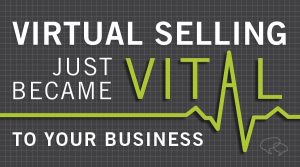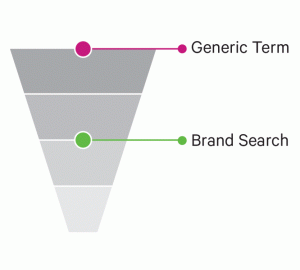Plus sessions on agile marketing and the MarTech Replacement Survey coming up at MarTech next week.
MarTech’s daily brief features daily insights, news, tips, and essential bits of wisdom for today’s digital marketer. If you would like to read this before the rest of the internet does, sign up here to get it delivered to your inbox daily.
Good morning, Marketers, are we seeing transformation become permanent change?
We’ve talked a lot about how marketing — and business in general — has needed to adapt to the unprecedented circumstances of the last year and a half. But are we seeing not just temporary, albeit accelerated, digital transformation in response to temporary conditions, or are we looking at permanent change?
The latter, said Lenovo CEO Yang Yuanqing in his opening keynote at Techworld 2021. He believes hybrid work environments are here to stay, along with greater demands for improved connectivity regardless of location.
Lenovo’s roadmap reflects Yuanqing’s vision as it moves from device-as-a-service to everything-as-a-service — a subscription model for its whole portfolio. The vision is clear and Yuanqing, of course, might be right about the permanency of change. My take? We just don’t know yet.
Kim Davis
Editorial Director
Central marketing tech tools were replaced in the last year
Data from our MarTech Replacement Survey shows that foundational parts of the stack — marketing automation, email and CRM — were the most replaced solutions over the past year. The most widely replaced solutions surely reflect the intensified need for digital engagement we’ve witnessed over the past year to 15 months. Marketing Automation (24%) and Email Distribution (23%) heads the list.
The number three solution replaced was CRM (23%), which was surprising because, while B2B businesses especially had good reasons to acquire a CRM in 2020, it’s not as clear why existing CRMs needed replacing. The most likely explanation relates to the increasingly digital nature of the B2B purchase journey and the need to execute data-driven engagement at the right touchpoints.
We’ll be taking a deep dive into these and other findings from the survey when Anita Brearton, founder and CEO of CabinetM, joins Kim Davis on the virtual MarTech stage next Tuesday, September 14. Download the survey here (no registration required).
At MarTech: The evolution of agile marketing
This week, more than 80 agile marketers from around the world convened online for the Sprint Two virtual conference. One of its aims was to re-visit the values and principles which constitute the Agile Marketing Manifesto. At MarTech, which kicks off four days from now, we’re going to talk about what happened and why.
Joining us will be John Cass, a member of the core leadership team for Sprint Two; agile coach and regular MarTech contributor Stacey Ackerman; and Giannina Rachetta, marketing manager at 3M. Stacey and Giannina participated in the Sprint along with John.
Underlying some deep and contentious discussions about customer-centricity and the use of data, for example, were deeply held views about how agile marketing needs to evolve.
Seamless experience doesn’t mean only one channel
“We’ve all heard that adage, ‘there’s danger in not moving your business at the speed at which it should be moving,’” said Matthew Crocker, Director of Marketing for CX software company Table, at MarTech recently. “Right now, customers are becoming digital first, and let’s be honest, they’re becoming digital everywhere.”
Regardless of whether your business began as a physical store, or as an e-commerce play, many customers would like both. For instance, look at how ecommerce home and bed maker Resident moved quickly to establish itself at brick-and-mortar retail chains. Now that customers demand both, it’s the digital connection that brings experiences together, and there’s more pressure for marketers to make it seamless.
Seamless doesn’t mean reducing experience to a single channel so there isn’t anything to stitch together. Yet Crocker finds this to be a common method used by marketers, at least at the early stages of transformation.
The inclination might be to use a tried-and-true tool like a chatbot and simply assume that no other digital channels are necessary, he said.
“A lot of companies are struggling now with the plug-and-play solutions to keep their businesses relevant,” Crocker said. “The easy solution is to follow these methods that bend customers to predictable funnels…but it sacrifices experience for efficiency. It’s a common problem that a lot of traditional brick-and-mortar retailers fall into.”
He added that putting the customer first helps improve the transition from brick-and-mortar to digital channels.
InMoment acquires NLP specialist Lexalytics
Lexalytics, an established leader in the natural language processing (NLP) and analytics space (September 17, 2021) announced its acquisition by InMoment, the customer and employee experience platform. Lexalytics uses AI-driven NLP to drive insights from a range of channels, whether the data is structured or unstructured. These include social media, call centers, voice, reviews, support tickets and chat logs.
The acquisition is aimed at significantly elevating the analysis of customer and employee feedback in the InMoment Experience Improvement platform, going far beyond surveys, and transforming the data into actionable insights.
Why we care. Lexalytics was founded in 2003, which makes it a veteran in terms of marketing tech years. It’s also a rare example of a vendor almost dominating its niche in the market. InMoment is actually a year older and distinguishes itself from other CX offerings by emphasizing the importance of employee experience in achieving business success.
We won’t pretend we saw this coming, but it’s clear why a solution like Lexalytics can provide value in this context.
Quote of the day
“The future workplace will likely be a hybrid model. A permanent structure of change of individual lifestyle and organizational culture.” Yang Yuanqing, CEO, Lenovo
The post When transformation becomes permanent change: Friday’s Daily Brief appeared first on MarTech.
MarTech(41)
Report Post







